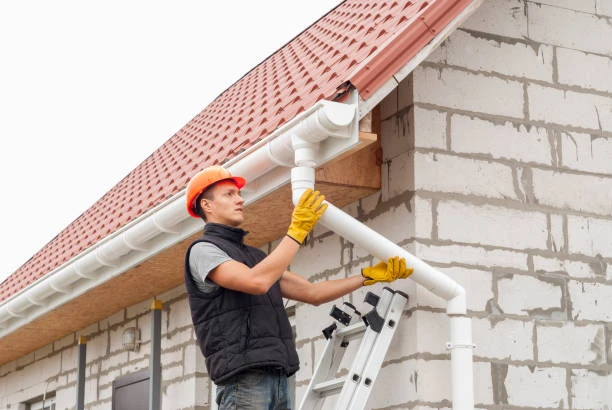In recent years, the importance of proper insulation for plumbing systems has become increasingly recognized, particularly when it comes to plastic pipe fittings. The application of spray foam insulation around plastic pipe fittings not only enhances energy efficiency but also prevents potential damage caused by temperature fluctuations. This article will explore the benefits, techniques, and best practices for applying spray foam insulation in and around plastic pipe fittings.
Understanding Plastic Pipe Fittings
Plastic pipe fitting are essential components in various plumbing systems, offering durability, resistance to corrosion, and lightweight characteristics. Common materials include PVC (polyvinyl chloride), CPVC (chlorinated polyvinyl chloride), and PEX (cross-linked polyethylene). These materials are often chosen for their cost-effectiveness and ease of installation, making them popular in residential and commercial plumbing applications.
Benefits of Using Plastic Pipe Fittings
- Corrosion Resistance: Unlike metal fittings, plastic pipe fittings do not corrode, ensuring a longer lifespan.
- Lightweight: The lightweight nature of plastic fittings simplifies transportation and installation.
- Flexibility: PEX fittings, in particular, offer flexibility, allowing for easier routing through walls and tight spaces.
The Importance of Insulation
Proper insulation of plastic pipe fittings is crucial for several reasons:
- Energy Efficiency: Insulation helps maintain the temperature of the water within the pipes, reducing energy consumption for heating and cooling.
- Condensation Prevention: Insulating plastic pipe fittings can minimize condensation buildup, which can lead to mold growth and water damage.
- Freeze Protection: In colder climates, insulation protects against freezing, which can cause pipes to burst and lead to costly repairs.

Spray Foam Insulation: An Overview
Spray foam insulation is a versatile and effective solution for insulating plumbing systems. Manufacturers create spray foam insulation from a mixture of isocyanate and polyol resin, which expands upon application to form a thick layer of insulation that conforms to the shapes of the surfaces it covers. This type of insulation provides an excellent air barrier, minimizing energy loss.
Types of Spray Foam Insulation
- Open-Cell Foam: This type is less dense and is often used for interior applications. It offers sound absorption and is more cost-effective.
- Closed-Cell Foam: Denser and more rigid, closed-cell foam provides a higher R-value per inch and is ideal for exterior applications where moisture resistance is critical.
Best Practices for Applying Spray Foam Insulation Around Plastic Pipe Fittings
To ensure effective insulation application, follow these best practices:
1. Prepare the Surface
Before applying spray foam insulation, clean the area around the plastic pipe fittings to remove any dust, grease, or debris. This ensures better adhesion and prevents contamination.
2. Choose the Right Foam
Select the appropriate type of spray foam insulation based on the specific application. For example, use closed-cell foam for exterior fittings exposed to moisture and open-cell foam for interior applications.
3. Apply in Controlled Conditions
Spray foam insulation works best in controlled temperature and humidity conditions. Ensure the environment is within the manufacturer’s recommended range for optimal performance.
4. Use Proper Techniques
- Layering: Apply the foam in layers, allowing each layer to expand and cure before adding more. This helps achieve even coverage and prevents overspray.
- Distance: Maintain the correct distance between the spray nozzle and the surface of the pipe fittings to ensure proper application.
5. Safety Precautions
Always wear protective gear, including gloves, goggles, and masks, when applying spray foam insulation. The chemicals used can be hazardous if inhaled or if they come into contact with skin.
Conclusion
Applying spray foam insulation in and around plastic pipe fittings is an effective method for enhancing energy efficiency, preventing condensation, and protecting against freezing. By following the best practices outlined in this document, contractors and homeowners can effectively insulate their plumbing systems, which will reduce energy costs and extend the lifespan of their plumbing infrastructure.
Frequently Asked Questions (FAQs)
- What types of plastic pipe fittings are commonly used?
Common types include PVC, CPVC, and PEX, each offering different benefits for plumbing applications. - Why is insulation important for plastic pipe fittings?
Insulation helps maintain water temperature, prevents condensation, and protects against freezing in colder climates. - What are the two main types of spray foam insulation?
The two main types are open-cell foam and closed-cell foam, each suited for different applications. - How should I prepare before applying spray foam insulation?
Clean the surface around the fittings, ensure the application area is within recommended temperature and humidity levels, and wear protective gear. - Can I apply spray foam insulation myself?
While it is possible, it is recommended to follow manufacturer guidelines and safety precautions, or to hire a professional for optimal results.